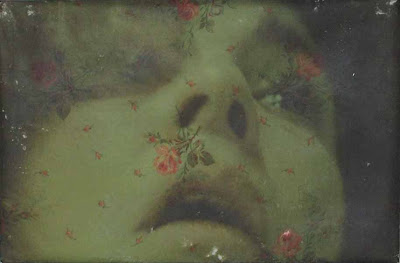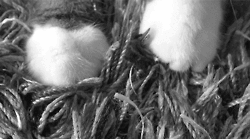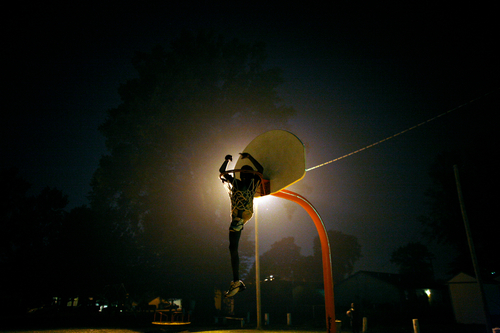Notes on a talk by Michael Stone at Centre of Gravity, Toronto, June 12, 2012
Bow
How do we bow? Our hands are in anjali mudra. Anjali is a Sanskrit word meaning prayer. We bring both palms together so we can feel both sides of the body. The palms are a fist distance from the face, and the fingertips are in line with the nose. Then you bow from the waist, from the lowest part of the spine.
Bowing can appear formal but I encourage you to see it as informal, otherwise it becomes something that is too precious. When I started studying with Roshi Pat Enkyo O’Hara I was coming from a Vipassana tradition that wasn’t big on bowing or ritual. I loved watching Roshi bow. I spoke to her recently and she said that bowing is her most important practice. Sometimes you’re too stiff, sometimes too casual. Just like in sitting practice, you need to be completely still and express yourself at the same time.
Suzuki: “After zazen we bow to the floor nine times. By bowing we are giving up ourselves. To give up ourselves means to give up our dualistic ideas. So there is no difference between zazen practice and bowing. Usually to bow means to pay our respects to something which is more worthy of respect than ourselves. But when you bow to Buddha you should have no idea of Buddha, you just becomes one with Buddha, you are already Buddha himself. When you become one with Buddha, one with everything that exists, you find the true meaning of being. When you forget all your dualistic ideas, everything becomes your teacher, and everything can be the object of worship.”
It means that all day you can bow to everything. Bhakti yoga is a pathless path – you’re devoted to whatever is around you, to whatever is arising. That’s why it important not to bow from your neck – that’s Facebook bowing – but from the deepest part of the belly. Bowing practice is like throwing up. You throw up everything you know. It’s existential bulimia. The transverse abdominus hollows out, then the roof of the mouth hollows and the soft palette lifts. It’s the same pattern as throwing up. What are you throwing up? Dualistic ideas.
Devotion
Practitioners of Tantric Yoga understand the body as a serpent. The serpent is in the inhale and exhale. The fan opens and closes. Every fold in the fan opens to reveal preconceptions, images, feelings. And then the exhale pulls them all together again. The centre of the pattern is empty. If you can put your mind in the centre you’re experiencing reality as it is unfolding. You’re not adding anything, you’re not putting a shade or a colour on experience. This is the heart of devotion. You’re not simply being devoted to what you want to be devoted to, you open your heart to whatever is there. This is the pathless path of bhakti yoga. How can you be a beginner at every moment? To throw up your ideas.
Try it. The next time you look at your arm – so tanned and muscular and ready for the beach, remember that it’s only the residue or vomit of the universe. You can look at your face in the mirror and wonder: how did I get so old? And then remember: your face is just the vomit of the universe. And when you see someone else you can remember they’re just like you: pure vomit.
Perhaps we could imagine that the words vow and bow are somehow related. Bowing and vowing to what is actually there in that moment. The best part of bowing is coming up and everything is fresh and new.
Candy
A student approaches Suzuki on retreat and says, “Every spare moment I have I go to the kitchen and snack. What should I do?” Suzuki reaches under the table and then holds out his hand. “Would you like some candy?” It’s fresh. It’s a fresh response.
Suzuki: “When everything exists within your big mind, all dualistic relationships drop away. There is no distinction between heaven and earth, man and woman, teacher and disciple. Sometimes a man bows to a woman; sometimes a woman bows to a man. Sometimes the disciple bows to the master,, sometimes the master bows to the disciple. A master who cannot bow to his disciple cannot bow to Buddha. Sometimes the master and disciple bow together to Buddha. Sometimes we may bow to cats and dogs.
In your big mind, everything has the same value. Everything is Buddha himself. You see something or hear a sound and there you have everything just as it is. In your practice you should accept everything as it is, giving to each thing the same respect given to a Buddha. Here there is Buddha-hood. Then Buddha bows to Buddha, and you bow to yourself. This is the true bow.”
Heavy
The Sanskrit word for teacher is guru, it’s related to the Latin word for gravity. It means someone who is heavy, that is not so moved by the secondary conceptualizations that make us suffer so much. A student is like a feather. From the perspective of a feather there’s gravity. But from the perspective of gravity there’s no feather. There’s only a teacher from the perspective of someone who is floating. There are parts of you that are light and floating and don’t want to grow up (say hello Peter Pan), and has no gravity, and there are parts of you that are grown up, and these parts need to look after each other. If this doesn’t happen then you find yourself hanging out at the Porsche dealership. Why am I back at the Porsche dealership?
Panic
Pan in Greek religion and myth is the god of the wild, shepherds and flocks, hunting and rustic music. He’s half goat. Pan is where psychology got the idea of panic. It’s the God that wakes you up in the middle of the night. Some part of you needs to grow up. What do I need to bow to that I’m not paying attention to?
Without a sitting practice you try to deal with problems by analyzing them or pushing them away. And let’s not forget our old favourite: addictive distractions. Practice allows us to hold the problem without having to move it somewhere. Our problems are the very stuff of practice, the grist, the centre of gravity. Meditation practice is a kind of bowing, it’s a throwing up of what we know. It’s a kind of dying, allowing yourself to die. Again and again.
Dogen: “As long as there is true bowing the way of the Buddha will not deteriorate.” When I was in Japan last month they were very particular about how you put your hands together in prayer. In Japan it’s called gasho, and there are four kinds. The first is firm gasho, the palms are together, they want you to feel both sides. The second is called No Mind Gasho. It’s less formal, and you hold a small space inside your hands. The third is Lotus Gasho, the tips of the fingers are apart, like a lotus flower blooming. The fourth is Diamond Gasho – the fingers are interwoven. Or folded and interwoven.
Is the rumour true? Are all yoga postures derived from spontaneous movements made in meditation? Think of a moment in your life when you spontaneously bowed. You didn’t even know the form, you just did it.
Little Anarchies
The Buddha had his awakening in the morning, and then set off to find his teachers who it turned out were dead. Then he sought out his fellow disciples, and as soon as they saw each other, they bowed. No words, it’s a beautiful moment. It’s a moment where we don’t have to be so puffed up, we can be devoted to all those little anarchies of sadness and sex, all those places in our city that haven’t been exploded by capitalism. Has anyone seen the nettles in High Park? There are heaps of them. Or the mustard greens near the Don River? So often we see only what we want to see. Could we bow to the places we’ve overlooked?
Suzuki: “After you have practiced for a while, you will realize that it is not possible to make rapid, extraordinary progress. Even though you try very hard, the progress you make is always little by little. It is not like going out in a shower in which you know when you get wet. In a fog, you do not know you are getting wet, but as you keep walking you get wet little by little. If your mind has ideas of progress, you may say, “Oh this pace is terrible!’ But actually it is not… We can say either that we make progress little by little, or that we do not even expect to make progress. Just to be sincere and make our full effort in each moment is enough. There is no Nirvana outside our practice.”
Most plants that are hallucinogenic make you sick to your stomach. There is some necessary and initial purging, and then the experience can begin. You have to let go. If you want to go deep you have to let go of something. You have to surrender. Suzuki: “Bowing is a very serious practice. You should be prepared to bow, even in your last moment.” To die. To bow. Give it up. When you bow it sets up all these other unforeseen perspectives. You walk your dog and it leads you to think about factory farming, and then you have to do something about it.
You open up to the orientation of the impossible Bodhisattva vows (I vow to serve all sentient beings. Wow.) and then you might develop some idea about that, and then you have to throw them up when you bow.
If you stop aiming your practice at something else you realize it’s all right here. This room. These people. That heart. The sense of “it’s something else,” always gets in the way of satisfaction. Suzuki spoke about the railroad track of the bodhisattva way, the railroad track is sincerity. You don’t have to understand sincerity. This is my fave line of Suzuki’s: “When there is no gaining idea about what you do, then you do something.” How can we practice without anticipating anything? Without any gaining ideas?




